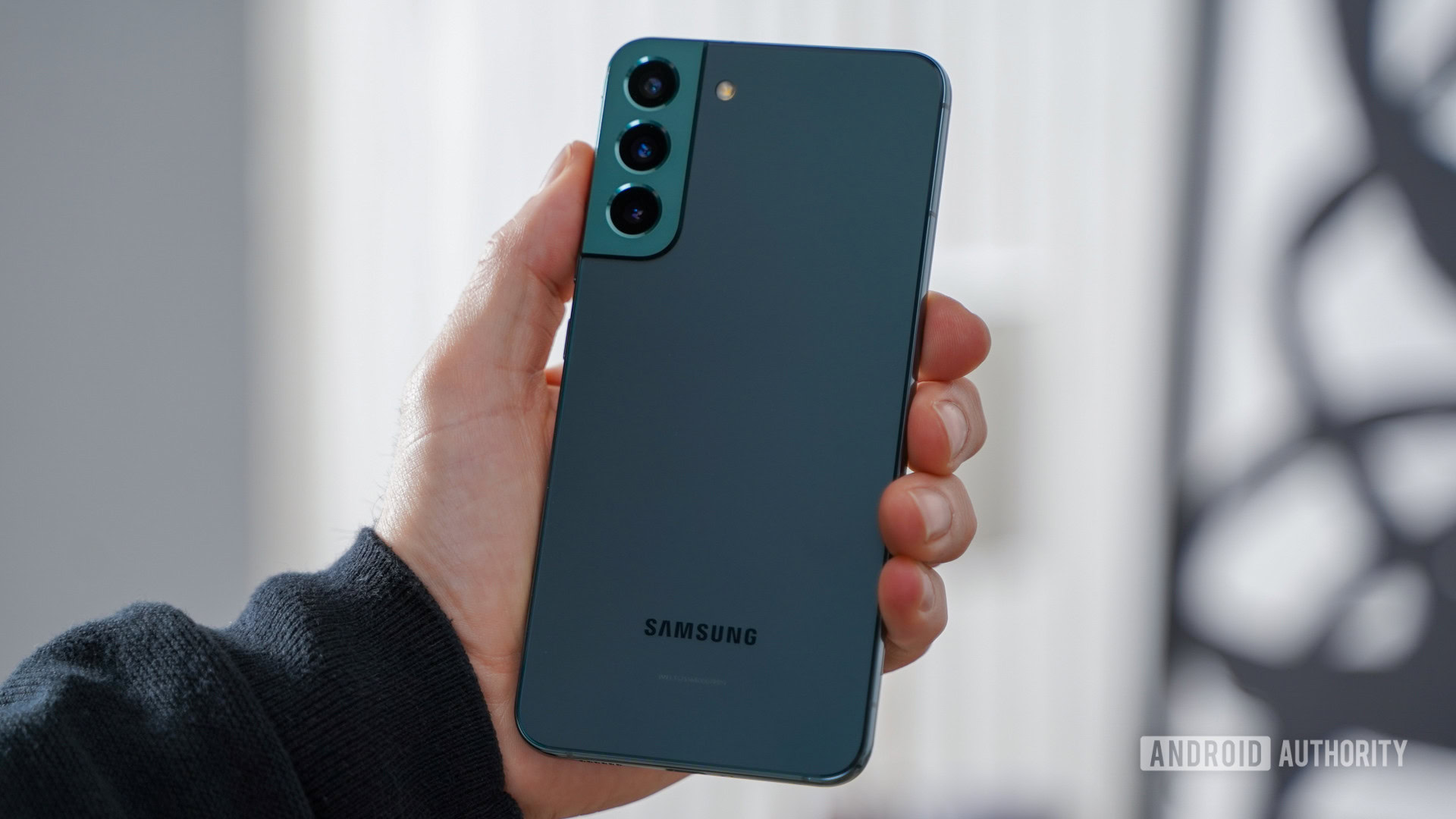Affiliate links on Android Authority may earn us a commission. Learn more.
Samsung Galaxy S22 Plus second opinion review: A great compromise
The Samsung Galaxy Plus model is in a somewhat awkward position each year: not as feature-packed as the Ultra model but not as cheap as the vanilla model. This seems to be the case in sales too, as initial domestic sales of the Galaxy S21 series showed that the S21 Plus was the least popular model out of the three S21 phones. Part of the reason is that the Plus model hasn’t always completely justified its higher price tag over the base Galaxy flagship, even though it tends to be a great phone on its own merits.
Does Samsung fall into this same trap in 2022? We’ve already crowned the phone with our Editor’s Choice award so we already know it’s a great phone. But I wanted to see for myself what really makes the phone tick as the middle entry in the Galaxy S22 series. Read on for our Samsung Galaxy S22 Plus review second opinion.
Our verdict: Samsung Galaxy S22 Plus review
If it ain’t broke, don’t fix it
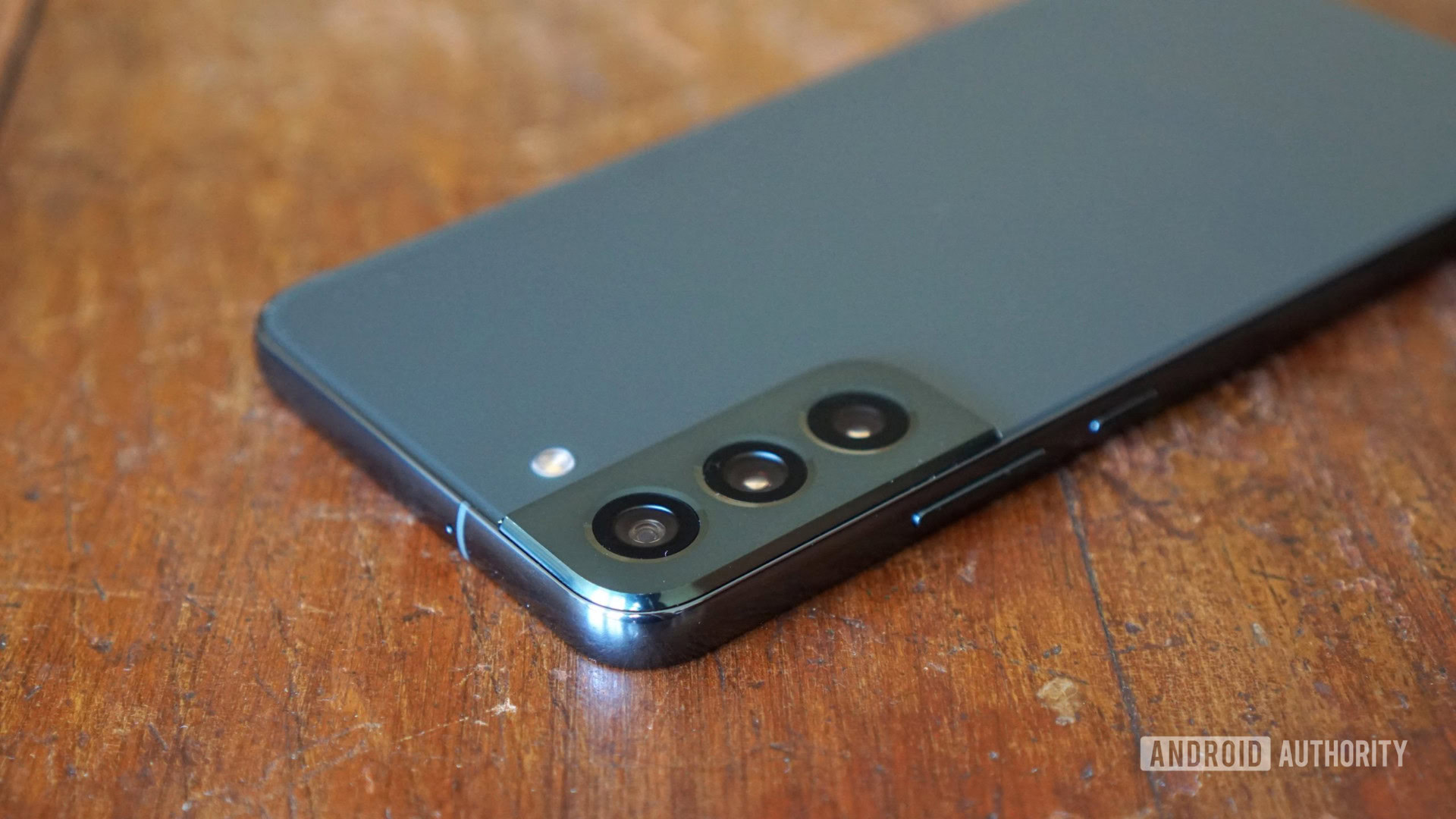
There might not be any significant changes here, but Samsung’s Galaxy S flagships are still top-class in 2022 when it comes to design. For one, we’re glad to see Samsung maintaining its now trademark contour cut camera housing seen on the S21 series, with the camera bump aligning with the phone’s sturdy aluminum frame.
The Galaxy S22 Plus also maintains its predecessor’s glass back (complete with Gorilla Glass Victus Plus), and you’ll be happy to know that the matte rear cover is pretty resilient when it comes to fingerprint grease. I still prefer plastic backs for durability reasons, but that’s an article for another time.
Check out: The best Samsung Galaxy S22 Plus cases
Our review unit is the rather neat Green variant, although the phone is also available in options like Phantom Black, Phantom White, Pink Gold, and several online exclusive colors (some of which restore the Galaxy S21 Plus’ two-tone aesthetic). One neat touch is that the green colorway extends to the aluminum frame as well.
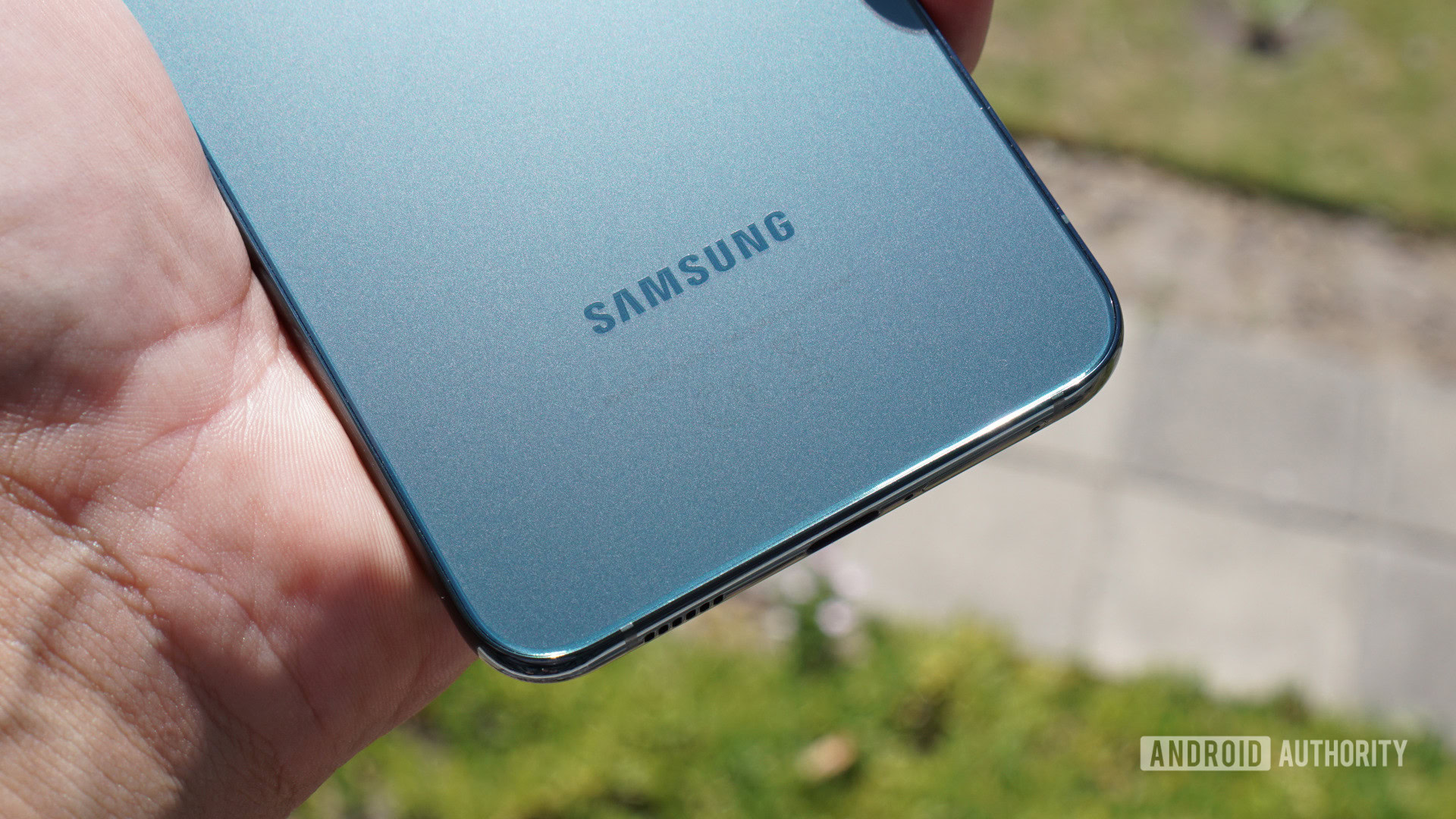
While I like the idea of more compact smartphones, the Galaxy S22 Plus is a great size. It’s significantly shorter than the likes of the Galaxy S22 Ultra but a little larger than the Galaxy S21 FE. In fact, Samsung actually reduced its size slightly over the S21 Plus. This all makes for a phone that’s easier to use one-handed than some other flagships on the market.
Other notable design-related features include an IP68 rating, a pair of pleasantly loud stereo speakers, the usual volume and power buttons, and the expected USB-C connectivity. The continued lack of a microSD slot will be a disappointment for many, especially considering the top storage model caps out at 256GB. That’s a bummer in this era of paid Google Photos storage and huge game sizes.
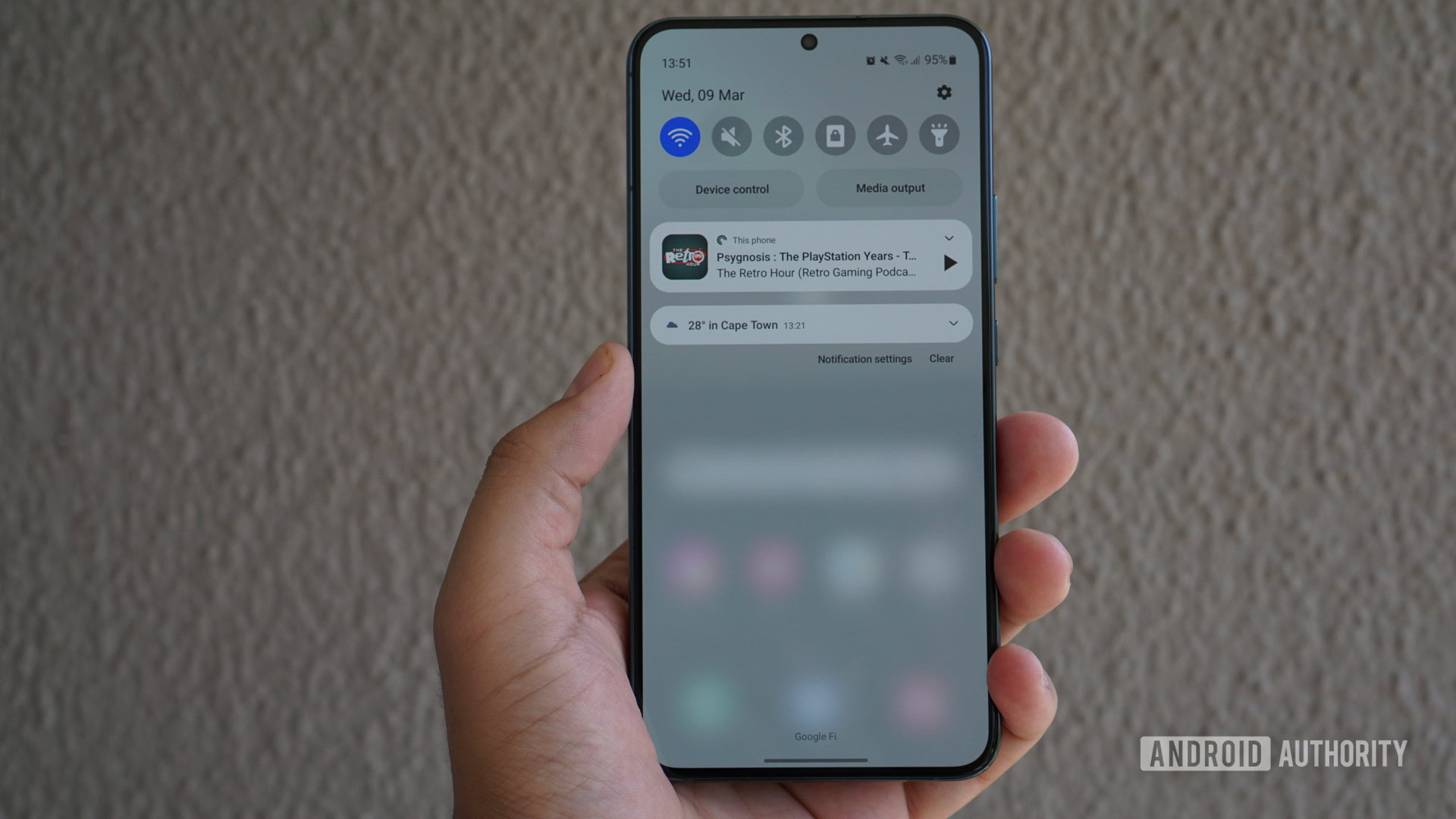
The Samsung Galaxy S22 Plus screen will look mostly familiar to S21 Plus owners when looking at the spec sheet. That means you’ve got an FHD+ 120Hz flat OLED screen here, albeit with a 19.5:9 aspect ratio as opposed to the Galaxy S21 Plus’ 20:9 panel.
There are a couple of other tweaks, though, such as a slight size decrease from 6.7-inches to 6.6-inches and the addition of tougher Gorilla Glass Victus Plus protection. We’d obviously still recommend slapping a case on the phone that protects the display, but the improved protective glass should give a little more peace of mind in the event of a drop.
As for the screen quality, it does the job well enough, although the default auto-brightness could’ve been a little better. Nevertheless, blacks look inky black, as you’d expect from an OLED screen, making for a more pleasant reading experience at night. I also had no problem using the screen in direct sunlight, so you won’t be squinting when taking outdoor snaps or if you’re using GPS navigation. The phone is set to a vivid color profile out of the box, but you can tune this or change it to the natural profile.
The S22 Plus delivers a great screen, as you'd expect from Samsung, while fingerprint unlocking is a speedy, accurate affair.
Samsung is also offering an adaptive refresh rate here, ramping down to 48Hz on the Galaxy S22 and S22 Plus when needed. The phone reports dropping down to 24Hz when viewing images and other similar tasks, but the company is using software tweaks for this and the screen technically only supports a minimum of 48Hz. Otherwise, those hoping for a constant/forced 120Hz mode might be disappointed — it’s an adaptive 120Hz or 60Hz-only affair here. This is an understandable move to conserve juice, but the option would’ve been welcome.
I’m also glad to report that the S22 Plus in-display fingerprint sensor is really fast and accurate. It’s definitely better than the older ultrasonic sensors like those found on the Galaxy Note 20 Ultra. I would, however, like to see lift-to-wake being enabled by default for a seamless unlocking experience.
Let’s talk about Exynos
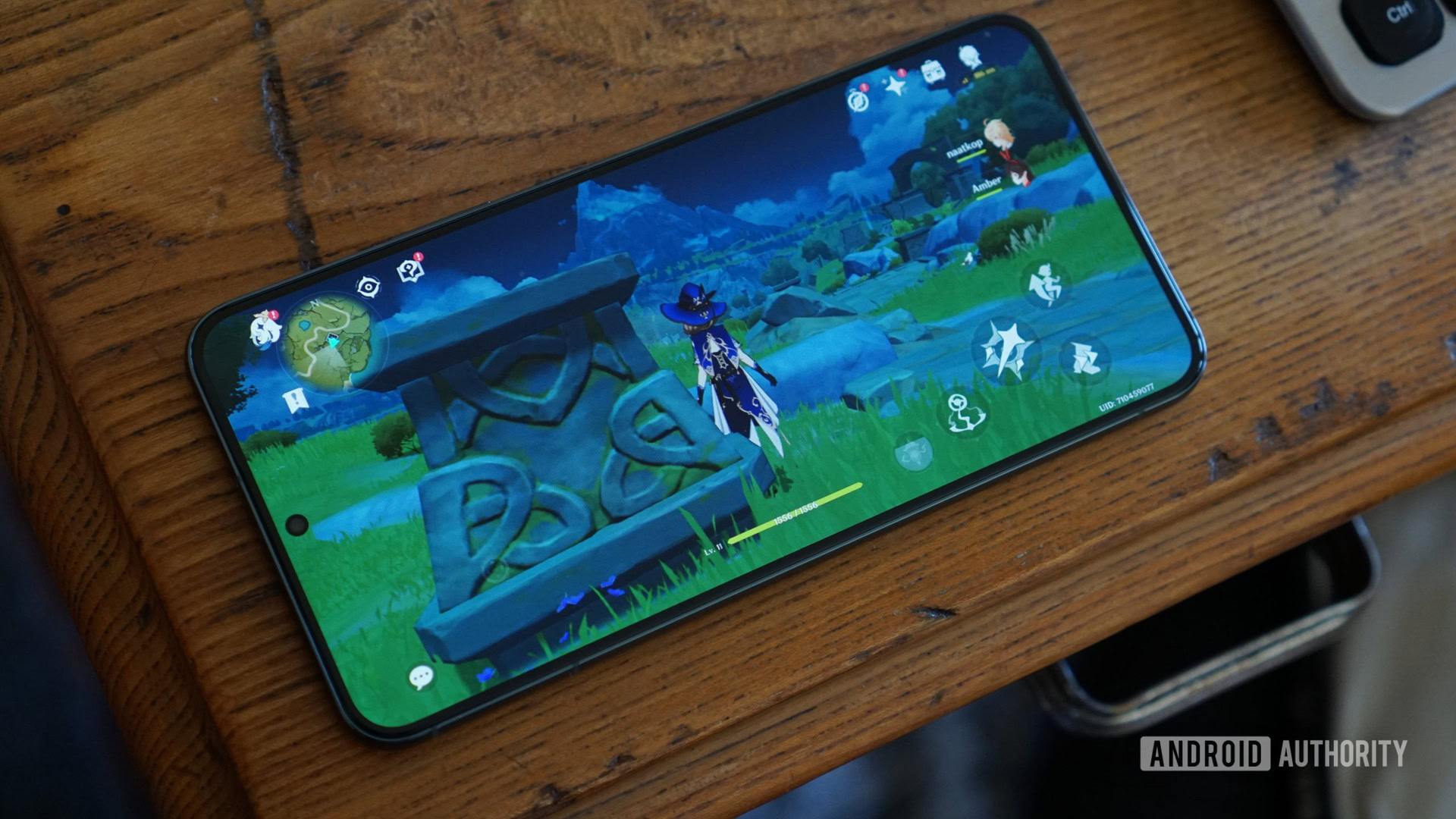
Samsung has equipped the Galaxy S22 series with either a Snapdragon 8 Gen 1 processor (Africa, India, Korea, US) or the Exynos 2200 chipset (UK and rest of Europe). We’ve already compared the two processors in a benchmark showdown, which I encourage you to read for a full breakdown of the differences. The TL;DR version is that we found that the Snapdragon variant pulled ahead for GPU benchmarks, but that both processors saw massive drops when it came to sustained performance.
What does this mean for everyday usage though? Well, in day-to-day use, our Exynos-equipped Galaxy S22 Plus offered a smooth experience when it came to web browsing, launching apps, and multitasking. Performance was also speedy enough when using the Camera app, such as switching between modes or taking 8K video, although I noticed that the app can get bogged down after taking a few full-resolution 50MP burst shots. The latter is understandable given the resolution and processing involved, and it only takes about two seconds before the processing icon disappears and you can shoot again.
The Exynos 2200 model is speedy enough, though you won't get the very best performance from the most demanding games.
Games are a much stiffer test for smartphones though, especially in light of the GOS throttling saga. But titles like World of Warships Blitz, Call of Duty Mobile, and PUBG Mobile ran smoothly on the Galaxy S22 Plus. We were also able to crank up the graphics and/or frame rate in these games. Genshin Impact was a tougher task, though, running smoothly for the most part but with the occasional jankiness. I’ve definitely seen more fluid performance on other handsets. There’s also little headroom for increasing graphical fidelity here, and emulator fans might run into some performance and compatibility issues with the Exynos model (we had a few issues with the AetherSX2 PS2 emulator which wouldn’t play ball with the OpenGL renderer).
As for endurance, Samsung has reduced the size of the battery in this year’s model from 4,800mAh to 4,500mAh. That might start ringing some alarm bells, but I definitely had no problems with battery life here. The Galaxy S22 Plus was routinely able to deliver a day and a half of everyday usage — Telegram, music, web browsing, Reddit, some games — when set to an adaptive refresh rate.
One relatively heavy day of usage saw me using the phone during the workday for videos on YouTube or YouTube Music as well as a podcast in the evening via the speakers. I continued the next day with almost two hours of YouTube playback, the phone conking out at around 9:30 AM (from around 7 AM). That made for a total of almost eight hours of screen-on time (seen above) — not bad at all.
You’re also getting 45W charging on the Plus variant for the first time, though Samsung isn’t providing a charger in the box. You’ll specifically need a USB Power Delivery PPS charger for the very best speeds, so check out our guide for the best options.
Overdue camera upgrades, for the most part
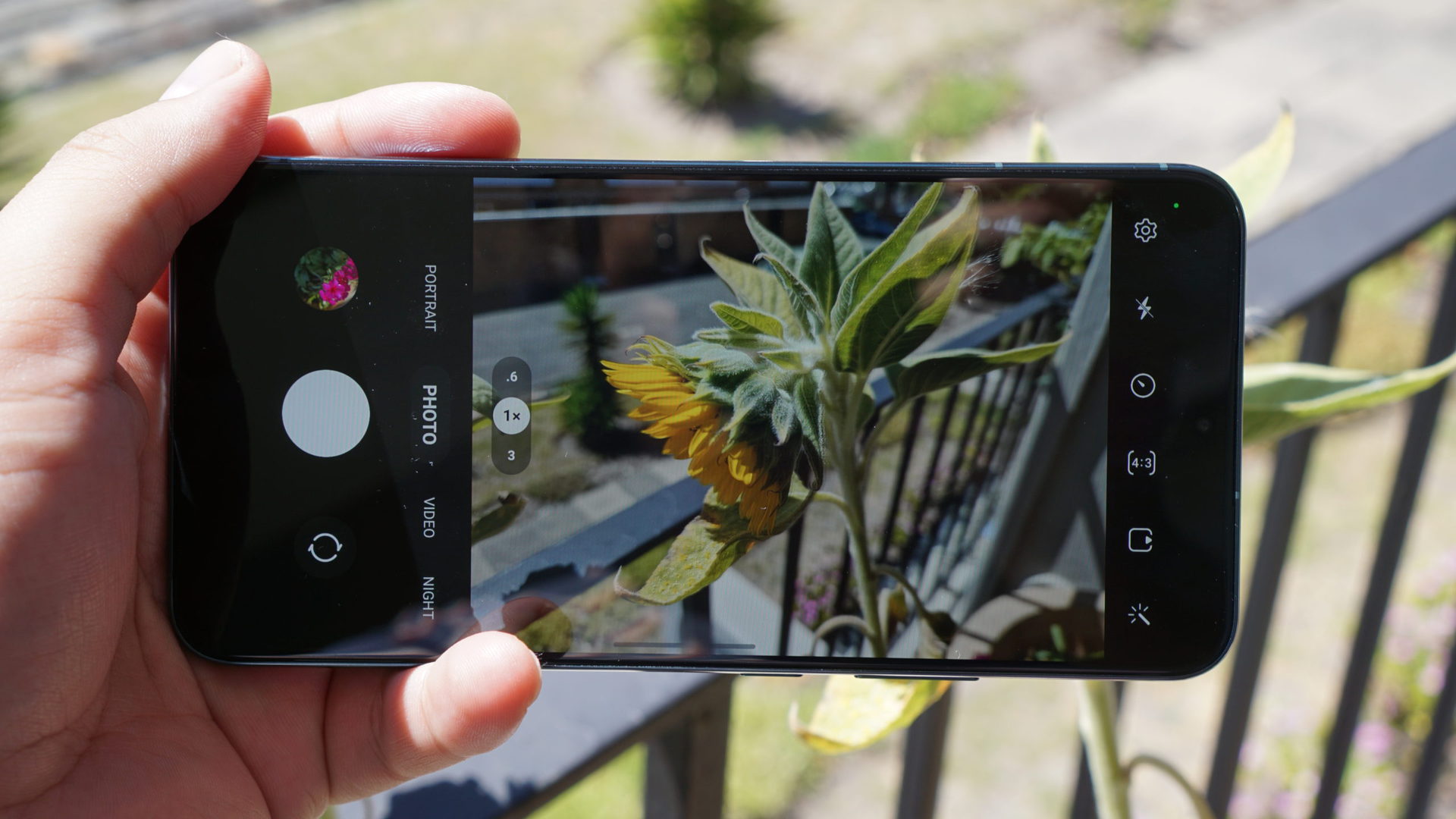
The Galaxy S22 and S22 Plus share the same rear camera system, namely a 50MP main lens, a 12MP ultrawide camera, and a 10MP 3x telephoto shooter. The main and telephoto cameras are marked upgrades in theory over predecessors, but what about in practice?
The 50MP primary shooter does a relatively great job during the day, as photos have a pleasant amount of saturation without going overboard. The main shooter captures a good level of resolvable detail, while the dynamic range is pleasantly wide too. The only major downside to the main camera is that the shallow depth of field means you can’t get as close to subjects as you’d like compared to 12MP snappers. But this is an issue that other 50MP phones have to deal with as well given the sensor size.
See also: The best camera phones
Samsung’s main camera also generally does a great job at night. The standard mode is dark but keeps noise in check, while the night mode here does a very good job of brightening the scene and reducing noise. It’s not always as clean as something like the vivo X70 Pro Plus which I reviewed not too long ago, but it’s still great when the sun goes down.
It’s also clear that the ultrawide camera is solid but needs some work. Colors aren’t always consistent between it and the main camera, with the ultrawide going for a more saturated, overly-contrasty look at times. There’s also a notable step up in corner softness and noise (check the noisy leaves in the image of the bench above). Finally, it lacks autofocus and therefore a macro mode. It nevertheless does a good enough job during the day, but it’s not best-in-class.
Samsung has overhauled two out of the three rear cameras on the S22 Plus, and it definitely shows.
Furthermore, the ultrawide camera disappoints at night, with pictures being darker and presenting more noise than the main camera. Thankfully, the night mode tames this noise and produces a pleasant, bright image, although noise reduction can smear away detail in obvious places.
Meanwhile, the 10MP 3x telephoto camera is a welcome addition here, marking the first time since the Galaxy S10 that Samsung actually included a real telephoto camera on its middle-weight model as the previous two relied on hybrid zoom to go beyond 1.1x optical zoom. Pictures taken with the 3x optical camera offer a solid amount of detail and good dynamic range. Colors aren’t always consistent with the main camera, but they’re close enough. Switch to 10x zoom and you can get usable images for social media, but you’ll definitely notice the watercolor effect, washed-out colors, and a general lack of detail. Needless to say, 30x zoom shots aren’t that great.
Selfies are handled well for the most part via the 10MP camera. The phone captures plenty of detail while dynamic range is great here, balancing my face and backlit scenes without issue. In saying so, portrait mode is prone to major depth errors now and again, as you can see with my hair in the seaside photo further up the page.
Camera shootout: Samsung Galaxy S22 Ultra vs Galaxy S22 Plus
Much like the last few generations of Galaxy flagships, the S22 Plus tops out at 8K/24fps recording but also offers 4K/60fps video as well. The company’s Super Steady video mode is available here as well, offering improved stabilization. Unfortunately, the mode still only captures a maximum of 1080p/60fps, as opposed to 4K/30fps. But that’s about par for the course for the rest of the industry. Video quality is good here, as you’d expect from Samsung, although I much prefer 4K/60fps or the Super Steady option over the more juddery 8K mode.
You’ve also got a number of other modes here, such as the handy Single Take mode, hyperlapse, and Director’s View. Dive into the pre-installed photo editor and you’ll also find an Object Eraser that now offers reflection and shadow removal. I would love a long exposure mode here, but the phone still has one of the more impressive camera suites on the market.
One UI to rule them all
It’s hard to argue that One UI isn’t one of the best third-party Android skins, offering a ton of features as well as an aesthetic that isn’t as polarizing as others out there.
The Galaxy S22 Plus in particular ships with One UI 4 atop Android 12, and it’s generally plain sailing here. The skin is performant for the most part, while Samsung also finally includes the Discover screen on the left-most home screen by default now.
There are a couple of annoyances, however, such as power + volume down being the default way to access the power menu. This can be changed, but it still feels clumsy. After all, you now have two different actions for turning on and turning off the phone.
One UI is a less polarizing, more polished affair than most other skins.
I did notice a weird bug that sees the screen occasionally turning off, although touch inputs are still detected. Hit the power button and the screen briefly turns on before turning off again — you’ll need to hit the power button a second time and unlock the phone to keep the screen on. Still, this is the only major bug I saw during my time with the device, and it’s likely that this is related to the pre-production software on the test unit I used. We didn’t see these types of issues on our retail Galaxy S22.
Samsung is also ahead of even Google when it comes to update commitments, pledging four years of OS updates and five years of security patches for the Galaxy S22 series. Meanwhile, Google is able to match the security patch pledge but limits OS updates to three years. Well done, Samsung.
Samsung Galaxy S22 Plus review second opinion: The verdict
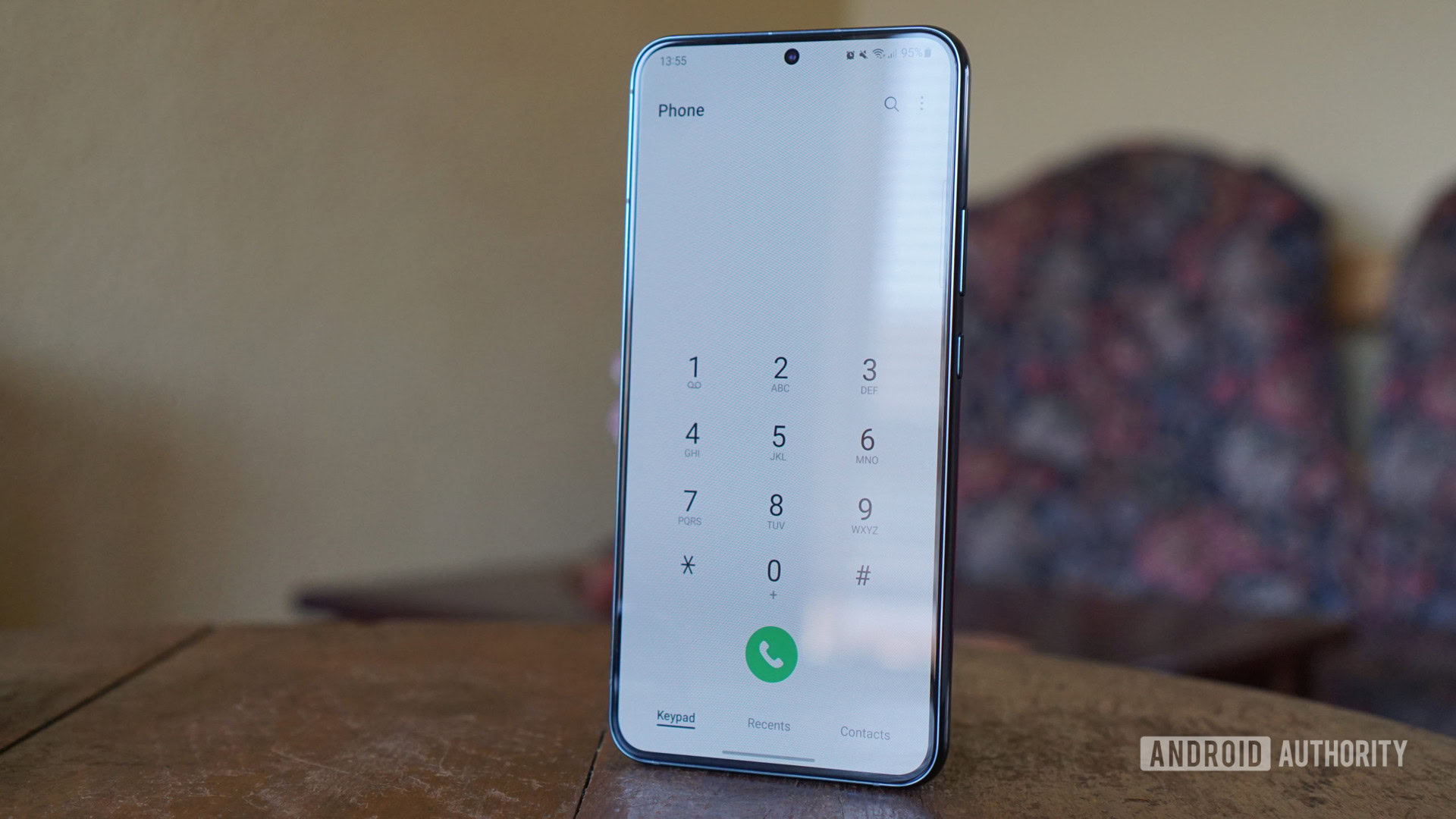
Samsung’s Plus phones have been stuck in an awkward middle ground for a couple of generations now, but the Galaxy S22 Plus certainly makes a strong case for being the company’s best Plus offering to date. Between the lengthy endurance, updated rear camera system, commitment to updates, and great size, there’s really a lot to like here, and it matches up well to other $1,000 flagships.
In saying so, the standard Galaxy S22 ($799) is virtually identical to the Plus variant save for the much smaller screen and hobbled battery life. You’re still getting the same capable silicon, flexible cameras, slick screen, and premium extras (IP68, wireless charging, glass back). Samsung does provide some extras to the Plus in the form of 45W charging support (vs 25W charging on the S22), as well as Wi-Fi 6E and UWB support, but you need to decide whether these extras are worth spending $200 more. Speaking of spending more, there’s always the elite option: the Samsung Galaxy S22 Ultra ($1,199).
Don’t miss: The best Samsung phones
There’s also another notable competitor in the Google Pixel 6 Pro ($899), coming in at $100 cheaper and bringing a sharper screen, even bigger battery, and a periscope zoom camera. But Samsung’s flagship has superior software support and is far more widely available around the world.
Finally, we’ve got the iPhone 13 Pro ($999), sharing the same price tag, while also offering a 120Hz OLED screen, wireless charging, IP68 rating, and a flexible triple rear camera system. Apple’s phone does stand out thanks to a superior chipset on paper, a more versatile ultrawide camera, and access to an exclusive ecosystem. But Samsung’s phone also brings 8K recording and a host of other neat camera tricks (e.g. Single Take, object erasing, etc.).
Nevertheless, those who value a bigger screen and charging almost every other day should definitely keep the Galaxy S22 Plus in mind. It’s definitely one of the more well-rounded flagship phones you can get.
